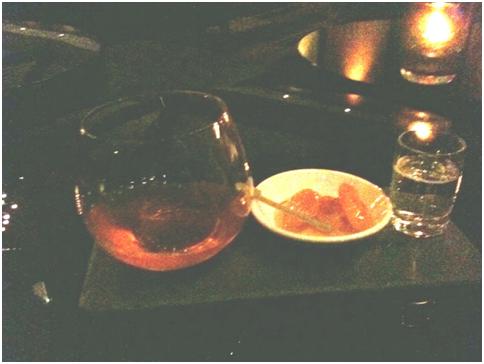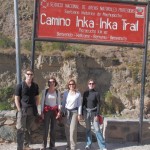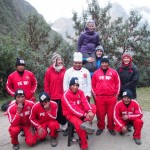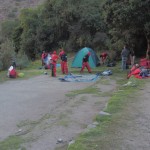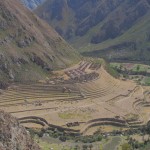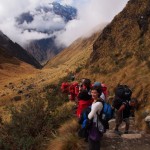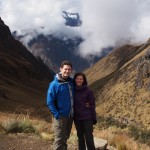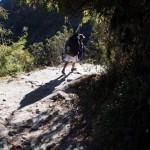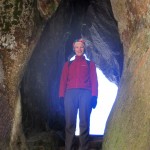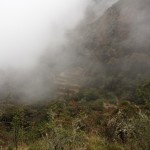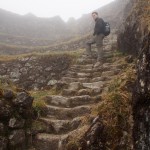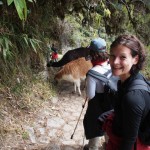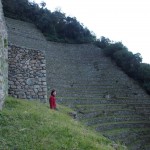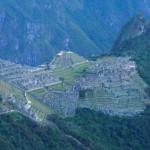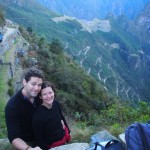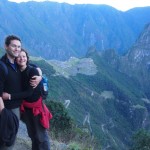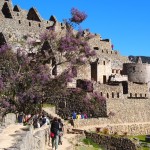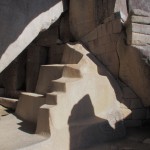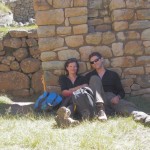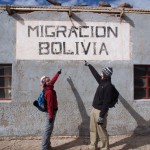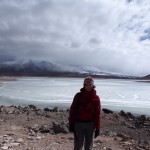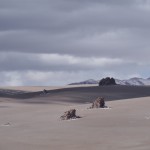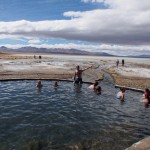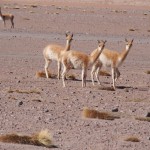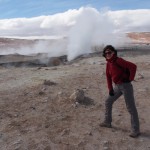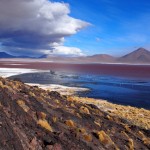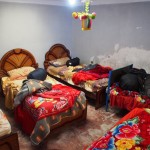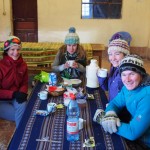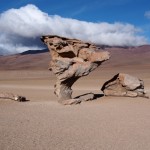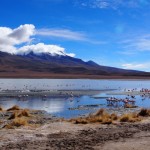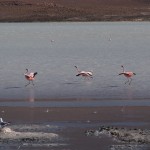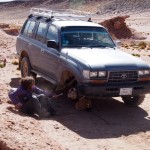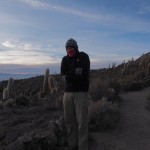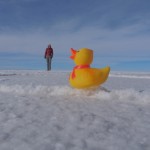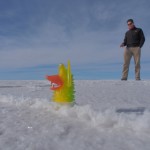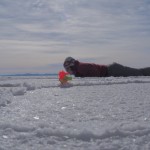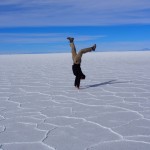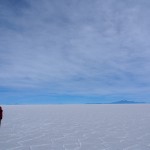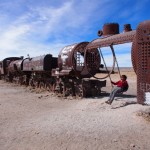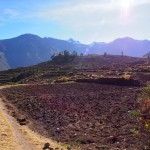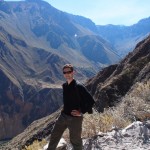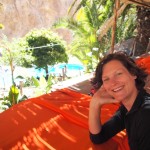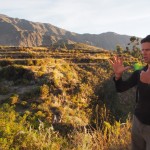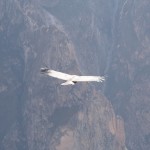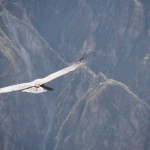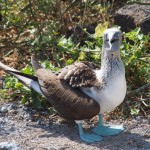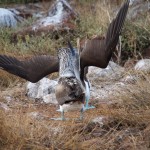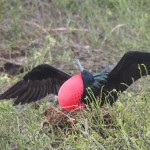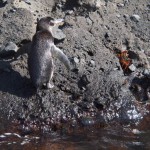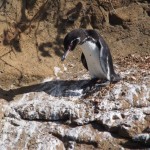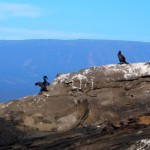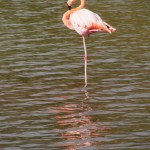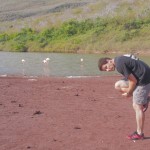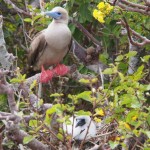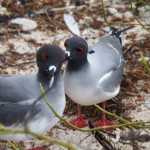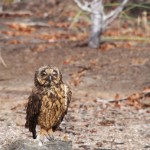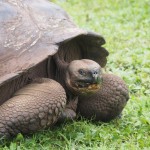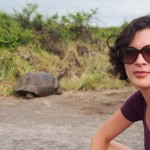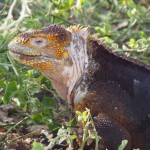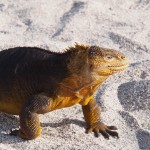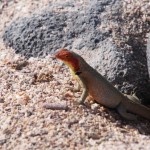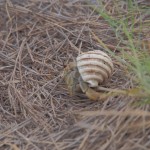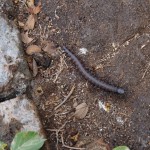Easter Island. The mere name is enough to make you tingle – the mystery of the ancient population that lived and died here, leaving only the enigmatic moai as their legacy. It’s also a beast of a place to get to. We had to go.
First impressions of this amazing place, it has to be said, weren’t great. We flew there from Cusco just after the Inca Trail – one of those flights which is theoretically just fine (only one connection, in Lima), but in practice quite brutal – a 5pm flight from Cusco to Lima, then a seven hour layover in Lima airport before a 1am flight to Easter Island, landing at 6 in the morning. Bear in mind that for the past few days we’d been going to bed same time between 7 and 8 at night – and the fact that the Lima airport lounge is lousy – and you’ll appreciate that we were a little on the tired and grumpy side when we landed.
Then hit Hurricane Dani. Well, actually make that Damp Squall Dani. The manager of the (otherwise lovely) guest house she was staying in, capable of turning the cheeriest soul despairing within a few short seconds. “Welcome to the island. You here for long? Three days? Oh. There isn’t much to do here and it’s pretty wet right now…..” All this cheery chit chat whilst waiting for an hour for our fellow passengers just to enjoy the privilege of our 3 minute courtesy transfer to the guesthouse. We got Dani’ed a few more times over the next few days – no, it was impossible to arrange a tour of the island (took us 10 minutes), no there were no good places to buy fresh produce (partially true, but we managed), etc, etc. It actually affected our mood for the first half day we were there, until we realised what was happening, shrugged off our despondency and set off to explore!
And what better way to explore a mystical island full of ancient statues than by quad bike! Sounds crazy, but actually all of the roads on one side of the island are dirt tracks and extremely difficult to navigate in a car, so a quad bike is actually a pretty solid way to get around. Plus its FUN. Other than when you get caught in one of the many heavy downpours that Easter Island suffers at this time of year – yep, we did, nope it didn’t bother us (that much), but that’s why we’re in full waterproofs in all the photos.
It rains a LOT there. And the wind is also pretty crazy – think a visit to the blustery Scottish countryside in early spring and you’ve about got the measure of it. The unexpected advantage of which being the amazing rainbows we saw almost every day on the island, adding yet one more dimension of slight un-realism to the place.
First stop on the quad bike was Rono Kau crater, a crater lake covered in reeds whose crater rim also forms the edge of the island at that point. Wildly scenic, it’s known as Witch’s Cauldron and looks just that way with the reeds simmering away on the giant circular surface. Then onto the Orongo Village, which is a partially restored old village, lived in by a tribe with a strong birdman culture. It’s only once you’ve been on the island that the houses – hobbit like little places which don’t get much higher than about 2 foot – make sense. Anything to escape the ever present wind.
Then finally the moment we’d been waiting for – our first glimpse of moai. The first site we saw had a couple of broken down moai on the ground – very romantic and a great intro to the place (yes they really are that big!). The next site, Ahu Akivi, was the money site – seven standing moai, all facing towards the sea (unusual – most of the moai faced inland as they faced towards the village they were erected to protect). We got there just before sunset and enjoyed the place in near solitude for some time; it was magical.
The next day we went on a tour which took us to another couple of great sites – Ahu Tongariki, with 15 moai all near the coastline, and Rono Rakuru, the quarry were all the moai were created. Rono Rakuru in particular was pretty flabbergasting – there are over 30 moai there, all still half buried in the earth (the theory is that the moai were built in advance of local big wigs’ deaths – but that the tribe then died out, or possibly ran out of trees to be able to roll the moai to their intended sites, before they could be erected). It’s strangely like being in a tiki bar – there’s so many moai and they’re all so well preserved that you half expect to tap one of them and find out its made of polystyrene. (They’re not. I tried. I hurt my fist).
Next day was a slow day to potter round Hanga Roa, see a few more moai and relax a bit. We got up pretty early to go buy some fresh food for dinner (the island has markets, but they are pretty ad hoc, running from the time the boats land with fish to the time that everything has been sold). Stepping outside the front door we were followed by a vaguely collie like dog. Which, as it turned out, had adopted us for the day. We walked to town; the dog followed. We went into the market; the dog waited outside patiently. Ditto at the supermarket. The dog curled up on James’ feet whilst we enjoyed our daily indulgence of coffee and ice cream, then walked happily home with us. It strangely made this one of our nicest relaxed days of the trip so far.
We’ve 2 theories for the dog’s delight in us: (1) James’ magnetic personality; or (2) the presence throughout the day of the enormous spiky local fish which we’d bought early in the day. I hear the local name is dogfood fish. It was very tasty.
-
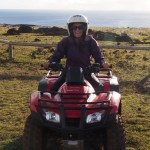
-
I look pretty fierce but to confess – I wasn’t actually driving (cheat!)
-
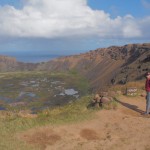
-
Rono Kau crater, also known as Witch’s Cauldron – wonder why!
-
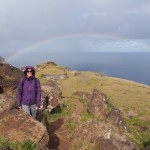
-
Leprechaun hunting. No pot of gold though
-
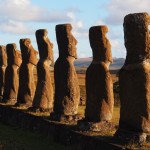
-
Just as amazing from the back!
-
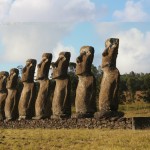
-
Our reward for a hard day’s quad biking
-
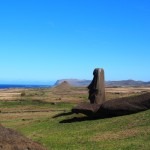
-
Toppled moai – must have been drinking the local home brew
-
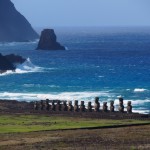
-
Moai go to the beach
-
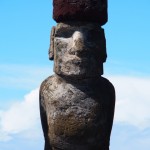
-
One of the very few moai to have kept his ‘do intact
-
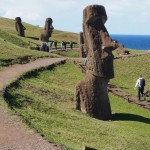
-
Moai quarry. Like Disney remade Easter Island (moai guv’nor….faaaaasands of’em)
-
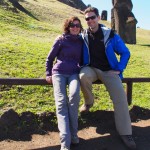
-
James and me and our ickle moai babies
-

-
One man and his dog. And his coffee and ice cream.
-
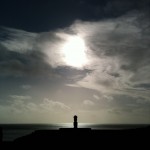
-
Clouds part…finally. It was worth the wait!
